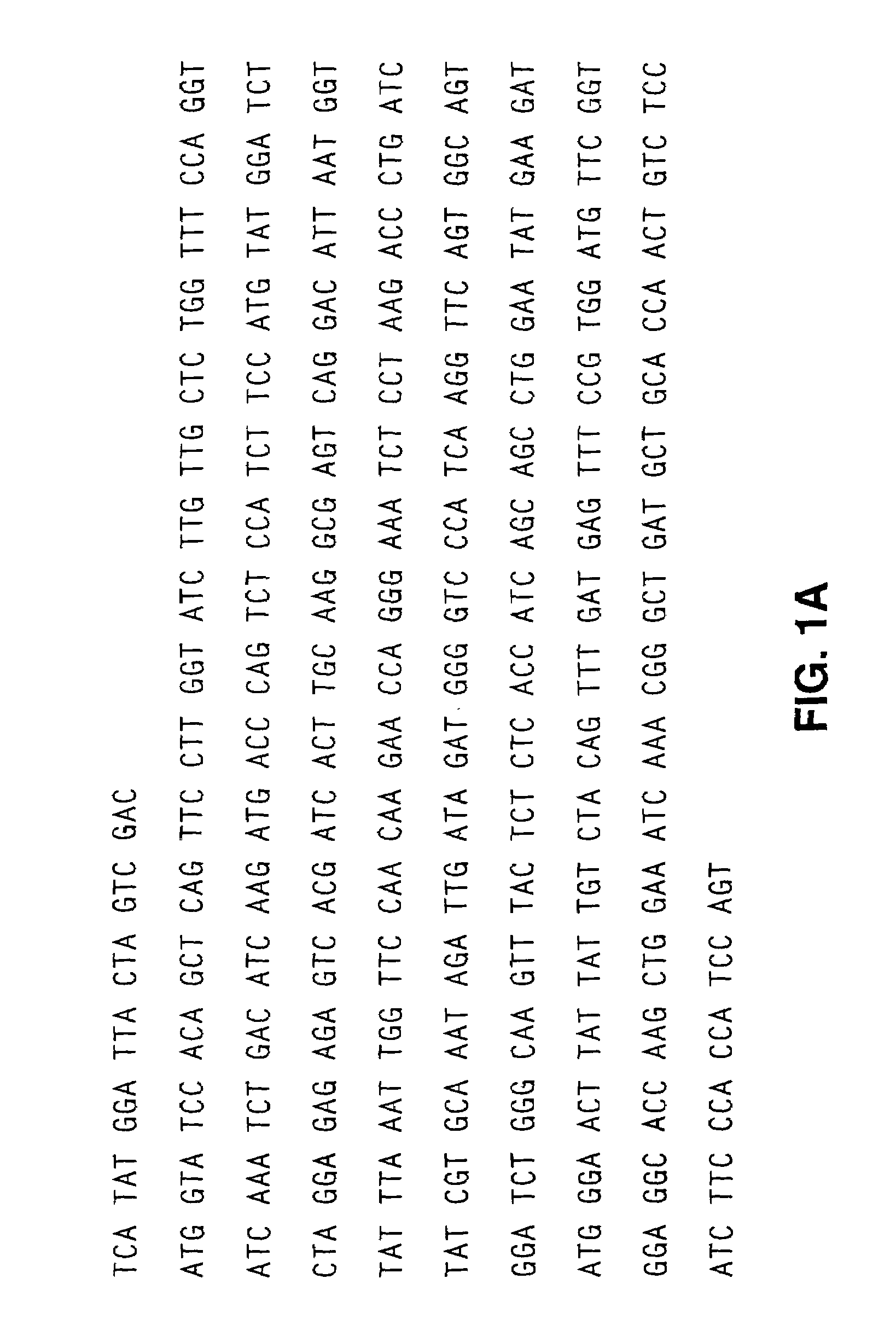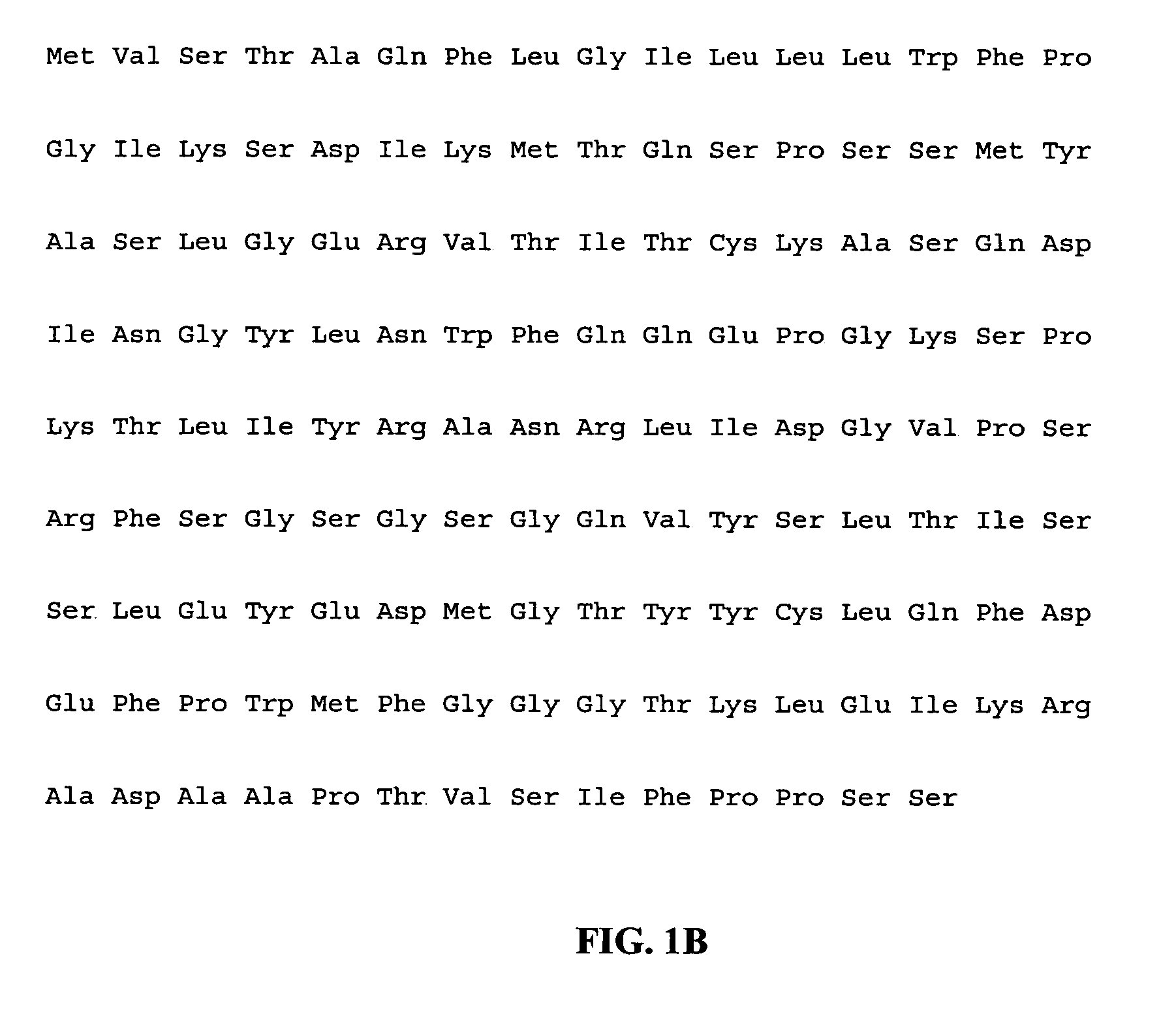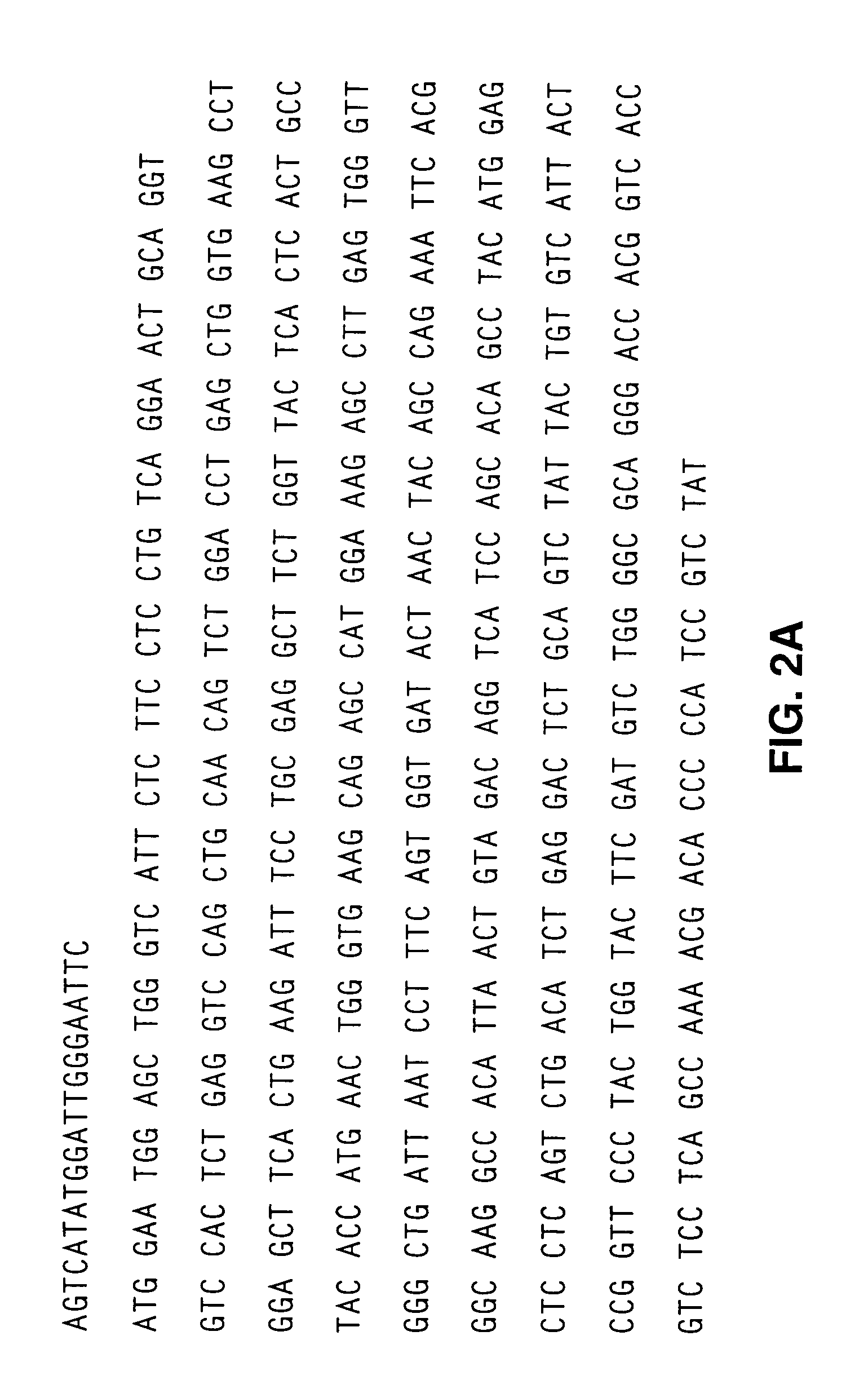Murine monoclonal anti-idiotype antibody 3H1 sequences for human carcinoembryonic antigen
a human carcinoembryonic and monoclonal antibody technology, applied in the field of monoclonal anti-idiotype antibodies, can solve the problems of difficult to obtain large quantities or purified tumor-associated antigens, and the need for alternative therapies
- Summary
- Abstract
- Description
- Claims
- Application Information
AI Technical Summary
Benefits of technology
Problems solved by technology
Method used
Image
Examples
example 1
Generation and Characterization of 3H1 Anti-Idiotype Antibody
[0237]The monoclonal anti-idiotype antibody producing hybridoma cell line 3H1 was created and identified according to the following description. Aspects of both the immunization procedure and the screening procedure were important to obtain an antibody with the desired specificity and functionality. 3H1 was one of a number of Ab2 that were initially produced, and was identified as the candidate with the most desirable features.
[0238]3H1 was obtained by using the 8019 antibody as immunogen for an anti-idiotype response. 8019 binds to a unique epitope of CEA that is not present on other members of the CEA family, with virtually no cross-reactivity with normal adult tissues or hematopoietic cells including granulocytes. Koprowski et al. (1979) Somatic Cell Genet. 5:957; Mitchell (1980) Cancer Immunol. Immunother. 10:1.
[0239]The immunizing antibody (Ab1) was the mouse anti-CEA monoclonal antibody 8019. Since the responding ani...
example 2
Cloning and Sequencing of 3H1 cDNA
[0294]Unless otherwise specified, all cloning techniques were essentially as described by Sambrook et al. (1989) and all reagents were used according to the manufacturer's directions.
[0295]cDNA Cloning and Sequence Determination of the Variable Regions of 3H1
[0296]To sequence the VH region, total RNA was isolated from 1×107 3H1 hybridoma cells. Yield of total RNA was about 100 μg. mRNA was prepared by passage through two-cycles of chromatography of oligothymidylate-cellulose columns. The yield of mRNA was about 10 μg. First strand cDNA was synthesized using SuperScript Preamplification kit (GIBCO / BRL). The DNA fragment encoding the VH of 3H1 was then amplified by PCR using the 5′-primer GGGAATTCATGRAATGSASCTGGGTYWTYCTCTT (SEQ ID NO:35) and the 3′-primer CCCAAGCTTCCAGGGRCCARKGGATARACIGRTGG (SEQ ID NO:36) (I=inosine, R=A or G, Y=C or T, K=G or T, S=C or G, W=A or T) corresponding to sequences of the leader (signal peptide) region amino acids −20 to −1...
example 3
T Cell Proliferation by a Polypeptide Fragment of 3H1
[0301]To examine the potential of polypeptide fragments of 3H1 to act as T cell epitopes (as measured by T cell proliferation), a polypeptide sharing homology with CEA (LCD-2, containing the CDR-2 from the light chain of 3H1 and having the sequence IYRANRLIDGV (SEQ ID NO: 11); amino acids 48–58) was synthesized using a 431A Peptide Synthesizer (Advanced Biotechnogies, Inc., Columbia, Md.). A T cell proliferation assay was performed using the peptide as a stimulant for splenocytes isolated from mice immunized with 3H1-KLH conjugate.
[0302]Cellular immune responses were measured by the proliferation of T cells in spleen incubated with LCD-2 and aluminum hydroxide precipitated isotope matched control anti-idiotype antibody 4DC6.
[0303]Splenic T lymphocytes were isolated from mice 7–10 days after a second booster and enriched by nylon wool column. The isolated T cells were incubated with irradiated, normal syngeneic spleenocytes which a...
PUM
| Property | Measurement | Unit |
|---|---|---|
| time | aaaaa | aaaaa |
| pH | aaaaa | aaaaa |
| pH | aaaaa | aaaaa |
Abstract
Description
Claims
Application Information
 Login to View More
Login to View More - R&D
- Intellectual Property
- Life Sciences
- Materials
- Tech Scout
- Unparalleled Data Quality
- Higher Quality Content
- 60% Fewer Hallucinations
Browse by: Latest US Patents, China's latest patents, Technical Efficacy Thesaurus, Application Domain, Technology Topic, Popular Technical Reports.
© 2025 PatSnap. All rights reserved.Legal|Privacy policy|Modern Slavery Act Transparency Statement|Sitemap|About US| Contact US: help@patsnap.com



